Lexar is well known in the storage market, especially with their flash products and more recently with their SSDs and portable storage. But it was only last year that they jumped into the memory market with laptop memory. Well, this year they are expanding that and are getting into the desktop side of things. They have introduced their first gaming memory with a normal and RGB kit as well as a simpler standard memory kit without a heatspreader as well. Today I’m going to check out both the new Hades gaming-focused 32GB kit with RGB as well as take a look at the 3200 MHz UDIMM kit and see what Lexar has been up to. Let’s check them out!
Product Name: Lexar Hades RGB DDR4 32GB 3600MHz Kit
Lexar DDR4-3200 UDIMM Desktop Memory
Review Sample Provided by: Lexar
Written by: Wes Compton
Amazon Affiliate Link: Lexar Hades RGB DDR4 32GB 3600MHz Kit
Lexar DDR4-3200 UDIMM Desktop Memory
|
Lexar Hades RGB DDR4 Desktop Memory Specifications |
|
|
Capacity |
8GB, 16GB, 16GB Kit (8GB x 2), 32GB Kit(16GB x 2) |
|
Memory Type |
DDR4 |
|
Interface |
288 Pin |
|
Speed |
3600Mbps / 3200Mbps |
|
Standard |
JEDEC / XMP 2.0 |
|
CAS Latency
|
CL22 / CL18-22-22-42 (3600) CL19 / CL16-18-18-38 (3200) |
|
Voltage |
1.2V / 1.35V |
|
Operating Temperature |
0° C to 85°C (Surface) |
|
Storage Temperature |
-55°C to 100°C |
|
Module Size |
137.8 mm x 45.6 mm x 6.2 mm (with heat spreader) |
|
Application |
Gaming / Content Creating |
|
Lexar UDIMM Desktop Memory Specifications |
|
|
Capacity |
DDR4-3200 8GB, 16GB, 32GB DDR4-2666 4GB, 8GB, 16GB, 32GB |
|
Memory Type |
DDR4 |
|
Interface |
288 Pin |
|
Standard |
JEDEC |
|
Speed |
3200Mbps 2666Mbps |
|
CAS Latency |
CL22 CL19 |
|
Voltage |
1.2V |
|
Operating Temperature |
0°C to 85°C (Surface) |
|
Storage Temperature |
-55°C to 100°C |
|
Module Size |
133.35 x 31.25mm |
|
Application |
Desktop |
|
Warranty |
Limited lifetime warranty |
Photos and Aesthetic
The first of the two kits that Lexar sent over was their new Hades RGB DDR4 kit. This is their new gaming kit and in my opinion the most important of the kits that they brought out. The packaging gets right to the point and has a large photo of the kit on the front. This is important because if you are shopping in retail, this is the only way you can see what the memory looks like. They let you know that it's an RGB kit by having the lighting filled in with RGB colors on the memory itself Then also up on the top edge, it has all of the RGB control software integration logos for each big motherboard brand are along the bottom to showing compatibility. The Lexar logo is also along the top and is the largest font along with the Lexar logo visible on the memory as well. Then down along the bottom, they have the Hades logo and they let you know this is RGB DDR4 with the capacity and speed on a sticker over on the right. Our kit is the 32GB 2x16GB kit running at 3600 MHz. The only thing missing here are the memory timings as well, but beyond that, they touch on everything people will be interested in seeing right away. The back of the box talks about Lexar’s own software to control the lighting and has the barcode and serial number. What also surprised me is they even have a specification listing back here that includes the dimensions of the memory which can be helpful if you are worried the tall kit might not fit.

 When you open the packaging up, the memory comes in a plastic tray with a clear plastic cover. I did notice our kit was popped out slightly, but overall it is designed to give a small buffer to prevent damage and to keep them from moving around. Nothing else comes with the kit, you get the box, tray, and the memory not that anything needs to come with it.
When you open the packaging up, the memory comes in a plastic tray with a clear plastic cover. I did notice our kit was popped out slightly, but overall it is designed to give a small buffer to prevent damage and to keep them from moving around. Nothing else comes with the kit, you get the box, tray, and the memory not that anything needs to come with it.


In addition to needing to be fast memory, “gaming” focused kits typically have heatspreaders to spread out heat and (mostly) for aesthetic reasons. The Lexar Hades kit isn’t any different. They have the regular Hades kit and the RGB version we have today and they both have the same heatspreader design. They use a black aluminum design that covers nearly the entire memory with just a touch of the black PCB sticking out on the bottom edge and at the ends where the hold down clamps clip in. I like that Lexar’s design is more than just a basic panel, the heatspreader design angles down and gets thinner near the bottom, and those clips and above the clip area they use the full width of the memory. The black wraps up around on the ends but the RGB light bar at the top is still very visible with nearly a half-inch of it wrapping down on the sides. On one side they have just the Lexar logo showing and then on the other side they have that same logo in the center as well as a sticker which has the required certification logos as well as the model information and speeds of the memory including the timings and each sticks serial number as well.




On the top edge, the RGB light bar that they use to diffuse the LED lights out to a softer/more blended look runs all the way to the ends and you can see how the aluminum heatspreader holds it in place on both ends. It’s a little harder to see, but I like that they slipped in the Lexar branding on the top edge with it debossed into the plastic.


In addition to the gaming lineup, Lexar does also now have their standard desktop memory as well and they sent over a pair of those. I should note that here in the US they sell this kit as a dual-channel kit but as you can see the packaging we have are the individual sticks which aren’t available here. The memory is the same, but the packaging if you buy the dual-channel kit is going to be different. That said the packaging does have a very different look than the Hades kit. The background is white on the top half and the bottom half has a grey stripe design. The Lexar logo is the biggest font once again with the DDR4 and the memory speed (which is 3200 MHz) and the capacity are in the bottom right corner. The front has a small window to show the sticker right on the memory for access to the serial number which saves the packaging from having to have the serial number sticker on the box as well like on the Hades kit. Then on the back, they have just a short description then a full specifications breakdown which I love including the dimensions.


Inside the packaging, the Lexar Desktop Memory has a black plastic tray with a clear top cover similar to the Hades kit but smaller. It keeps the memory safe and these did come with a quick installation guide as well where the gaming kit did not.

So the Lexar UDIMM Desktop Memory follows more of the KISS method where they keep it simple stu.. well we don’t need the last word there. There aren’t heatspreaders or any fancy lighting. But they did still stick with the all black PCB which looks great. The back of the sticks have the white sticker on them with the serial number, model information, capacity, timings, and of course the certification logos that are always needed. But beyond that, there isn’t much going on on the back. You can see a few traces around the sticker area and resistors down by the connection but that’s it. Then on the front side, you have the RAM chips visible. They are laid out like a dual stacked memory layout but if you look closely there aren’t traces up in the top section for a dual stick layout. What I think they are doing however is using the same layout that they use on the Hades kits and they have this configuration to make room for the lighting. You can even see small spots along the top of the PCB where they would put the LEDs. I like that they are being efficient with their design and are able to get a few variations out of it including this which in some ways IMO looks just as good as the kits with the heatspreaders.



Test Rig
Motherboard: Asus Crosshair VIII HERO WiFi
Cooling: Noctua NH-U12S for cooling
Noctua NT-H1 Thermal Paste
Storage: Corsair MP600 2TB
Cooling - Noctua NH-U12S
Power Supply - Corsair AX1200w
Case - Primochill Wetbench
Performance, Thermals, and Lighting
So for performance testing, I was most focused on checking out the new Hades ram, but I did also run the standard desktop kit through our testing as well. Before doing that though I did check out both kits with CPUz and Thaiphoon Burner to make sure they were running at the correct speeds and the Hades kit came in at 1799.6 MHz in CPUz which is just about right at their 3600 MHz clock speed and has the 18 CAS Latency, and 22-22-42 for the rest of the timings. They are running in dual channel and show up at 32 GBs as they should.
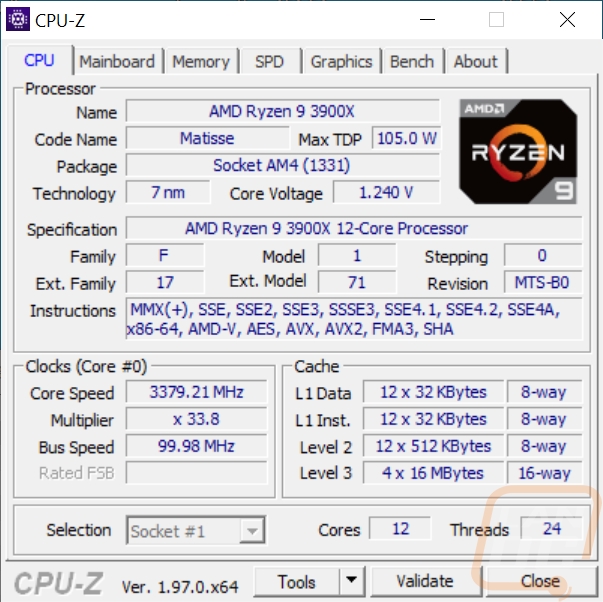
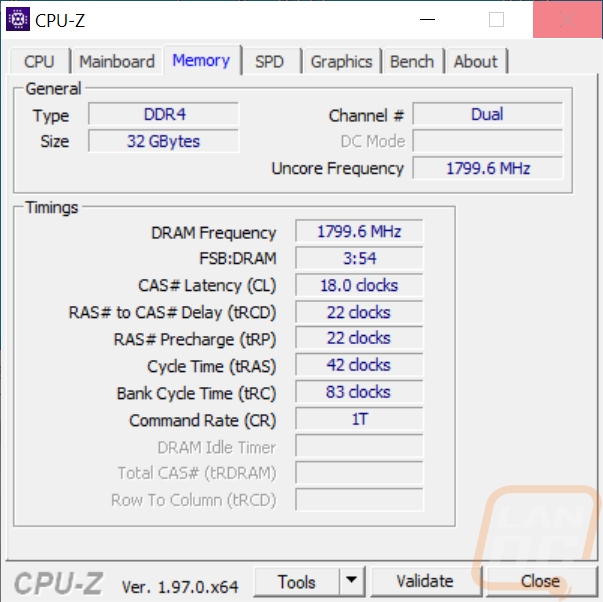
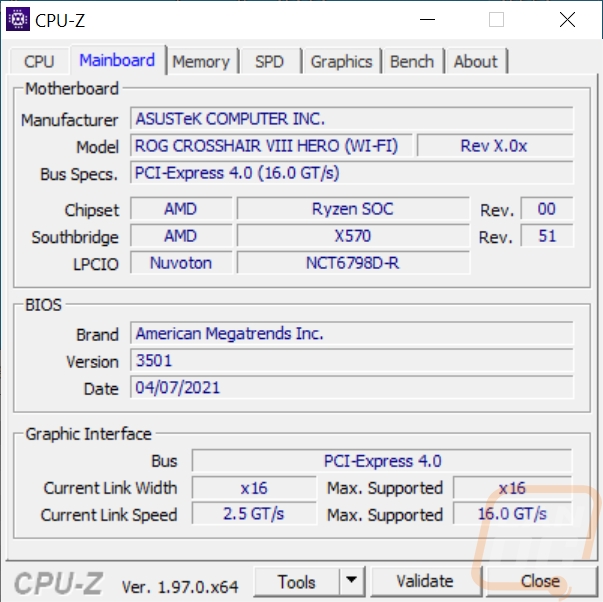
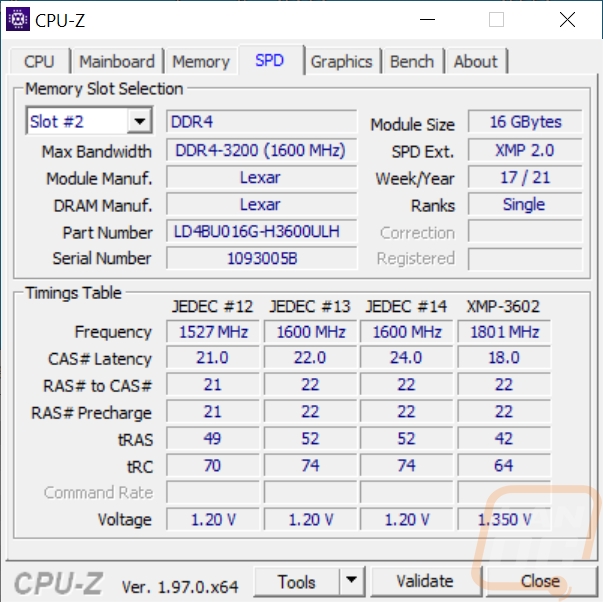
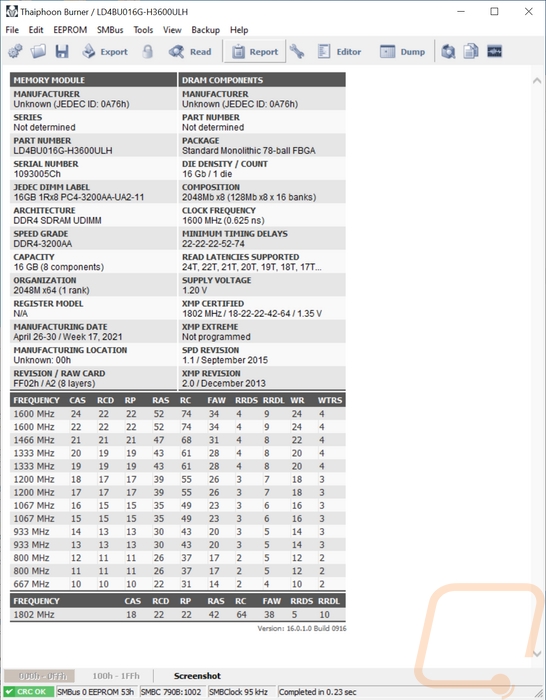
The regular Lexar desktop ram came in at 1596.8 MHz on CPUz which is 3193.6 MHz or just under the 3200 MHz expected which is normal. They have a CAS latency of 18 and have the same 22-22-42 as the Hades kit for the rest of their timings. I would say that matches the specifications, but they didn’t have the timings listed on their website for that kit. People looking at basic kits aren’t as focused on them.
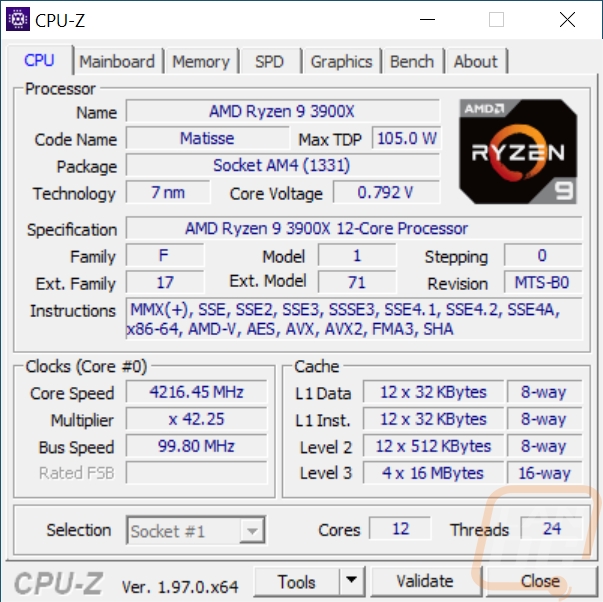
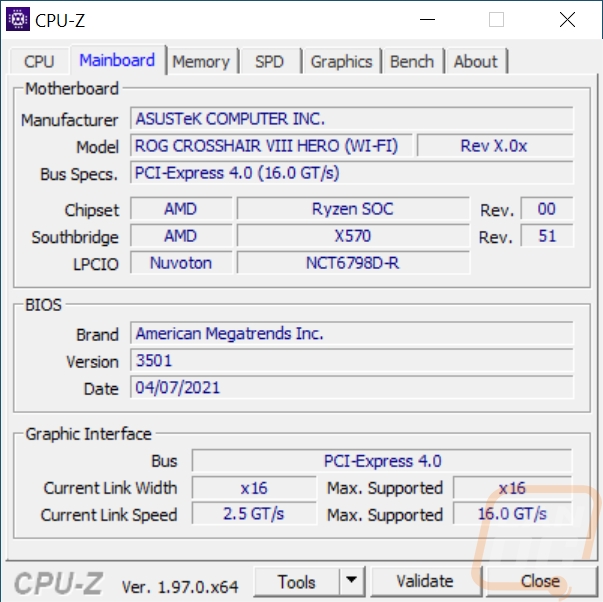
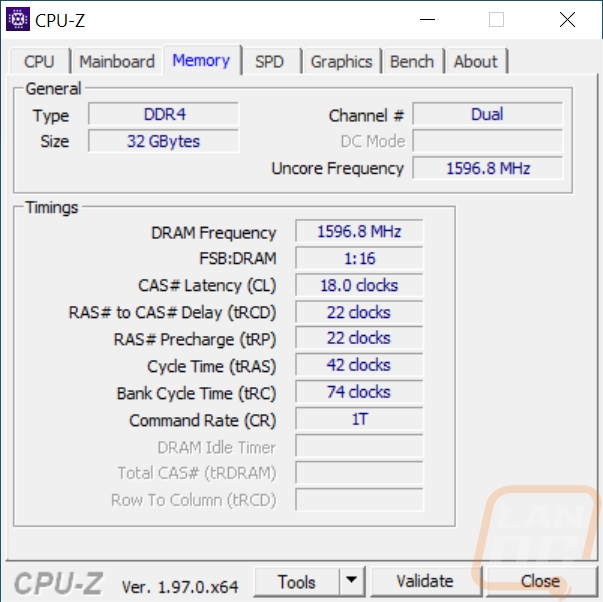
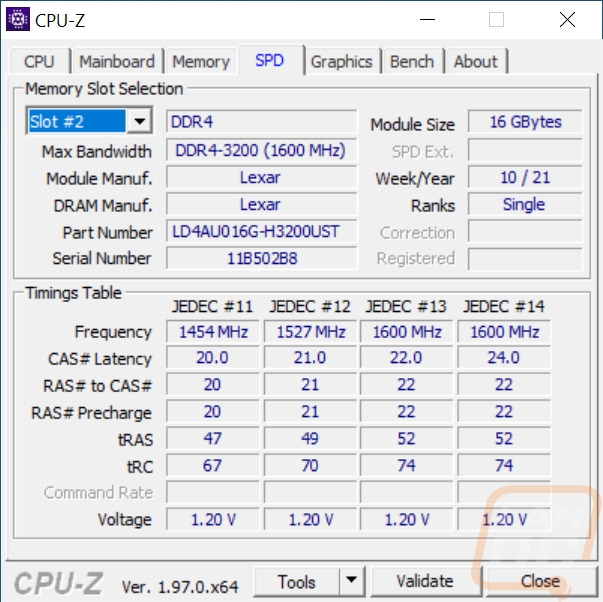
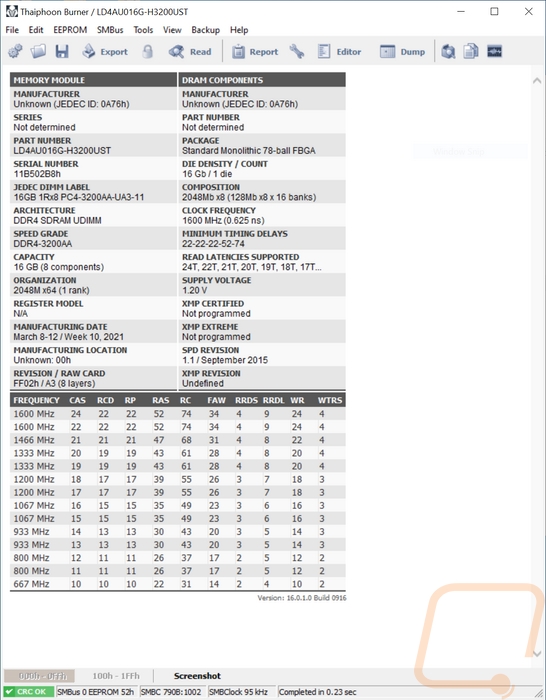
Jumping into testing I ran both the Hades kit and the Lexar desktop kit in AIDA64’s memory tests to check out read, write, copy, and latency performance. I also have comparison numbers from the last few memory kits that have come into the office as well. The Hades kit with its higher clock speed did better in the read speeds but did come in a little lower than the other two 2600 MHz kits tested due to the timings being a little looser. The desktop kit was then behind that but above the 3000MHz kit due to its 3200 MHz clock speed. The writing tests were very similar, but the gap between the Hades kit and the other 3600 MHz kits were a lot closer here. The copy test on the other hand put the Hades kit down a lot lower than the other 3600 MHz kits with their lower timings. Then the last test was a look at the overall latency and you would think that timings would play a big part here but the Hades kit did well and even the desktop kit was near the middle of the chart with what should be much faster kits behind it.




Next up I put both kits to the test in Cinebench R20 to see how much if any difference the different clock speeds and timings would make in the rendering with the CPU-focused benchmark. There were small differences in the performance, especially on the multi-core test. But in the single-core test, it preferred the slower desktop kit ironically. Overall though, here the performance difference from kit to kit was very small.

Then the last benchmark I ran was Passmark Performance Test 9. I ran the full memory mark test which runs a list of synthetic memory benchmarks and combines them all for an overall score. Here the Lexar Hades kit did especially well coming in second of the kits tested. The desktop kit also did well, outperforming a few faster kits which is because this test does take into account the overall memory capacity as well.

After finishing those tests I went back to AIDA64 and using their stress test put the memory under load for a half hour to get a look at things with the thermal camera. The first two pictures are the Hades kit and you can see that the heatspreaders were pulling the heat out across the kit well with no hot spots on the memory. The desktop kit on the other hand was showing warmer on each of the DRAM chips as you would expect with the hottest point in between the two sticks. But even then those weren’t hot enough to be any concern.




Before finishing up I also wanted to check out the lighting that the Hades RGB kit has up on top. As I mentioned in the previous section the entire top of the Hades kit is covered in a translucent diffuser to soften and spread out the light from the kit's LEDs. Without the diffuser, the lighting can be blinding and hard to even look at. But the best part is how the diffuser lets the colors blend together when it is running through effects like the default rainbow effect. So with support for all of the motherboard RGB software controls the Hades kit doesn’t need its own software but they do have one if you would prefer to use it called Lexar RGB Sync. You can do all of the normal effects as well as set the kit to single colors if you would prefer, which is what I like to do with RGB most of the time. I know most people think of the effects like below, but it also opens up new color options when previously if you had lighting it would be blue, red, or green and that was it. As a big fan of orange for example I can now match the Hades kit to the rest of my PC.






Here is a look at the default lighting as video as well.
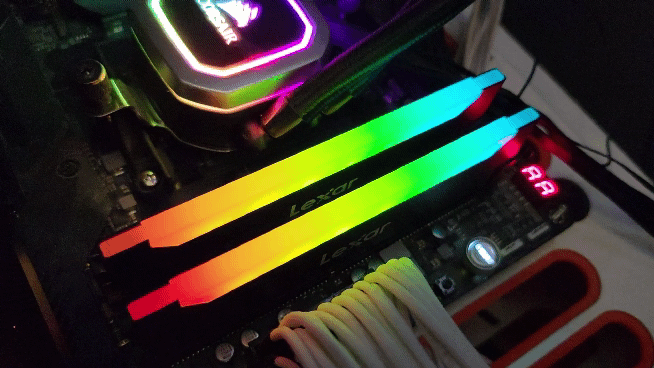
Overall and Final Verdict
Like most of you, I’ve been used to seeing the Lexar brand in the SD and USB drive market and more recently SSDs as well. But seeing them move into the crowded memory market was a bit of a surprise. It does make sense though, they have managed to make a name in the flash market alongside countless other brands. I’m also glad that while getting into the memory market, they aren’t just going with a basic desktop-focused kit. They do have that as you can see with the second kit I tested today. But they are also eyeing the gaming market as well. The Hades kit that they sent over has a nice simple styling with its black heatspreaders and the RGB lightbar they have across the top is nice because it can be seen from both the top and the side. The top view of the lighting runs the full length of the stick as well. The lighting is bright enough and has control using either their software or any of the big name motherboard options which means you can tie it all in with your other lighting if you do that. The performance was solid, they aren’t offering anything too high-end, but the 3600 MHz kit isn’t a bad speed though I do hope they work on having options with better timings later as well.
The Desktop kit doesn’t have the RGB lighting or the heatspreaders at all but they look nearly as good with their blacked out PCB and the double stacked layout while only using one stack keeps things clean. The Desktop kit isn’t available in the same speeds as the Hades kit, but its faster 3200 MHz option is solid and lines up with the stock speeds from AMD and Intel. Both kits are listed as having a lifetime warranty which is nice and Lexar has been around for a while now so it isn’t some fly-by-night operation where a warranty like that wouldn’t mean anything. Like with the Hades kit, I wouldn’t mind seeing a little lower timing options. The only other thing that I think the desktop kit could benefit from is the branding sticker dropping the big white section to fit even better with the blacked out look.
Both kits have the potential to be a good option as long as the pricing is right and Lexar is typically good at keeping their products priced well. Of course my timing today is a little off sadly. I’m late on this coverage and both kits were previously on sale at prices that I think would be spot on to where they should be. But I missed that boat. Currently, the 3600 MHz 32GB Hades kit is available for $216.99 but was $159.99 and the 3200 MHz 32GB desktop kit is currently $169.99 but was $124.99. Overall I think these are both good options if you keep an eye out for sales which I’m sure will come back. Especially as we get closer to the holidays.
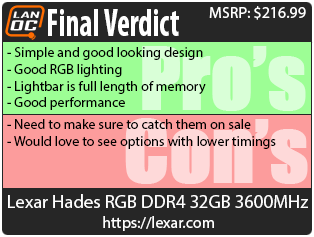
Live Pricing: HERE
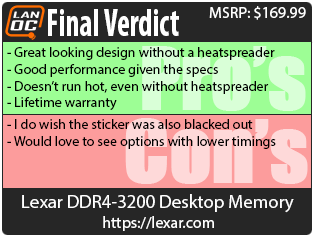
Live Pricing: HERE




